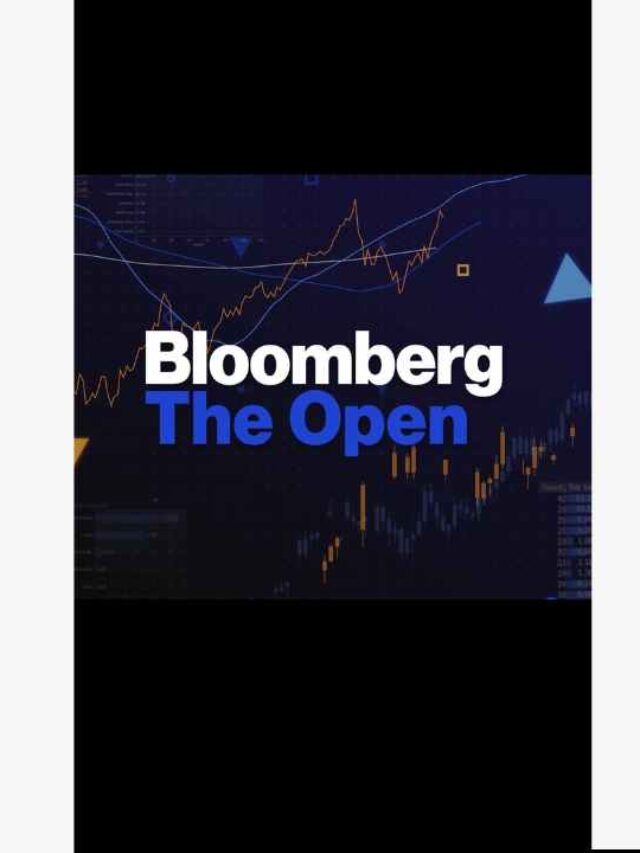Mixed Reality The Bloomberg Open: Mixed reality (MR) is an innovative technology that combines elements of virtual reality (VR) and augmented reality (AR) to create immersive and interactive experiences.
In this article, we will explore the world of mixed reality, with a specific focus on its applications and impact in the Bloomberg Open Europe Edition.

By leveraging MR technology, Bloomberg has opened up new avenues for information dissemination, engagement, and user experiences.
- What is the Name Given to the Center of the Island in Fortnite?
- UK-India Young Professionals Scheme How To Apply
- What is the Recommended Serving Size of Fruit?
- Why is a Cloud Environment Crucial for Generative AI to Work?
- What is the Heaviest Stone in Stonehenge
Definition and Explanation of Mixed Reality
Mixed Reality The Bloomberg Open: Before delving deeper, it’s essential to understand the distinction between VR, AR, and MR. While VR immerses users in a completely virtual environment, AR overlays digital content onto the real world.
MR goes a step further by seamlessly integrating virtual and physical elements, allowing users to interact with both. This blending of real and virtual worlds creates a compelling sense of presence and opens up limitless possibilities for various industries.
Evolution of Mixed Reality Technology
The journey of mixed reality technology can be traced back to its early developments in the 1990s. Over the years, significant advancements have been made in hardware, software, and computing power, enabling more sophisticated and accessible MR experiences.
Key milestones, such as the introduction of Microsoft HoloLens and other MR headsets, have propelled the technology forward, paving the way for its widespread adoption.
Applications of Mixed Reality in Europe
Healthcare Sector
The healthcare sector in Europe has embraced mixed reality technology for various applications. Surgeons are utilizing MR for preoperative planning, providing an enhanced visualization of complex procedures.
Medical training programs have also incorporated MR simulations to train and educate healthcare professionals effectively. Furthermore, MR-based patient care solutions have improved diagnosis, treatment, and rehabilitation processes.
Education Sector
MR has revolutionized education by bringing abstract concepts to life. Students can now explore virtual replicas of historical landmarks, conduct interactive science experiments, and engage in immersive language learning.
By providing a hands-on and engaging learning environment, mixed reality enhances comprehension and retention, making education more enjoyable and effective.
Manufacturing and Engineering
Mixed Reality The Bloomberg Open : The manufacturing and engineering industries have witnessed the transformative potential of mixed reality.
Designers and engineers leverage MR tools to create virtual prototypes, visualize complex systems, and streamline assembly processes.
With MR, stakeholders can collaborate in real-time, reducing errors and optimizing manufacturing efficiency.
Tourism and Cultural Heritage
Mixed Reality The Bloomberg Open : Mixed reality has breathed new life into the tourism and cultural heritage sectors across Europe. Visitors can explore historical sites and museums with interactive MR experiences, allowing them to visualize the past in a captivating way.
By merging digital content with physical artifacts, MR offers a unique and immersive exploration of cultural heritage.
Entertainment and Gaming
Mixed Reality: The Bloomberg Open : The entertainment and gaming industry has embraced mixed reality as a game-changer. MR headsets offer a more immersive and interactive gaming experience, blurring the boundaries between the virtual and real worlds.
Players can engage with virtual characters and environments, making gaming more engaging and captivating than ever before.
Challenges and Limitations of Mixed Reality
Mixed Reality The Bloomberg Open : While mixed reality holds immense potential, it also faces several challenges and limitations that need to be addressed.
Technical constraints, such as the high cost of MR hardware and limited field of view, hinder widespread adoption. User experience issues like potential motion sickness and discomfort during prolonged use also need to be mitigated.
Additionally, privacy and security concerns associated with capturing and processing user data must be carefully addressed to ensure user trust.
Adoption and Future Trends in Mixed Reality
Mixed Reality The Bloomberg Open : Mixed reality is steadily gaining traction across Europe. Industries such as healthcare, education, manufacturing, tourism, and entertainment are actively exploring the benefits of MR.
Looking ahead, we can expect increased adoption in sectors like architecture and design, where MR can revolutionize the visualization of projects.
Advancements in hardware, software, and cloud computing will likely drive more affordable and accessible MR solutions.
The future of mixed reality holds exciting prospects, with enhanced realism, improved user experiences, and greater integration with everyday life.
Conclusion
Mixed Reality The Bloomberg Open: In conclusion, mixed reality has emerged as a powerful technology with vast potential. Europe, including the Bloomberg Open Europe Edition, has witnessed the transformative impact of MR in various sectors.
From healthcare and education to manufacturing and entertainment, MR has opened up new horizons for innovation and engagement.
As the technology continues to evolve, it promises to reshape industries, improve user experiences, and create immersive and interactive worlds.
- What is the Name Given to the Center of the Island in Fortnite?
- UK-India Young Professionals Scheme How To Apply
- What is the Recommended Serving Size of Fruit?
- Why is a Cloud Environment Crucial for Generative AI to Work?
- What is the Heaviest Stone in Stonehenge
FAQ
1. What is the difference between virtual reality and mixed reality?
Virtual reality (VR) creates a completely digital environment, while mixed reality (MR) blends virtual and physical elements, allowing users to interact with both real and virtual objects.
1. Can mixed reality be used in architecture and design?
Yes, mixed reality is increasingly being used in architecture and design. It enables designers to visualize projects in 3D, explore different concepts, and collaborate more effectively.
1. Are there any health risks associated with prolonged use of mixed reality?
Prolonged use of mixed reality can cause discomfort and motion sickness in some users. Taking breaks and gradually increasing usage time can help mitigate these effects.
1. How is mixed reality transforming the healthcare industry?
Mixed reality is transforming healthcare by improving surgical planning, medical training, and patient care. It enhances visualization, enables realistic simulations, and fosters better outcomes.
1. Where can I experience mixed reality in Europe?
Many museums, cultural heritage sites, and technology centers across Europe offer mixed reality experiences. Check local attractions and events to explore MR opportunities in your area.

